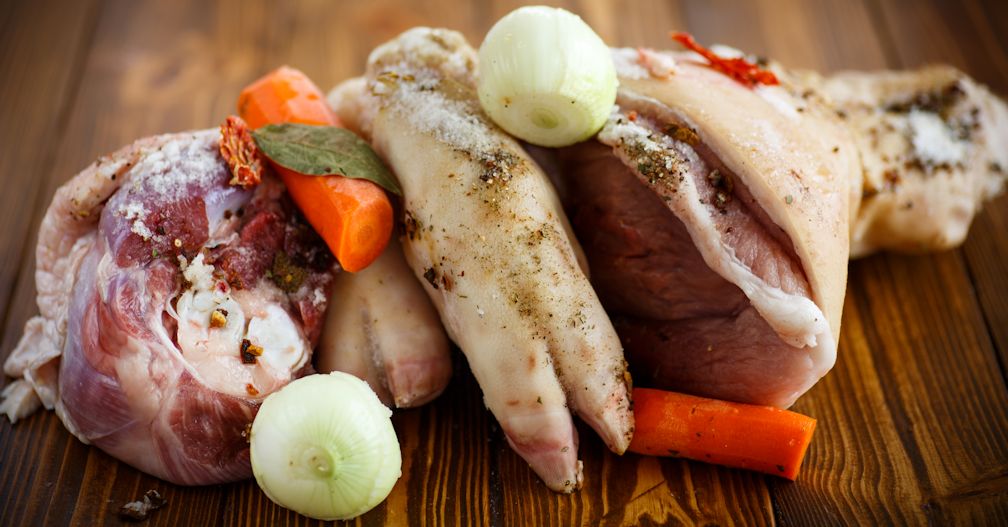Basic preparations in cuisine
Marinades, jellies, panades, thickeners and stocks are basic preparations for creating dishes. Those we know today have evolved from changes in cuisine over the centuries. Marinades are used to add flavour and sometimes tenderise meat while jellies add texture and a shiny appearance. Panade is prepared from flour, water, butter and eggs. Thickeners give consistency to liquids, while stocks are used as a base for various sauces.
Preparation of basic bases, rigour before art
Whether flavouring or tenderising meat, giving food a shiny appearance, making a water and fat mixture homogeneous, giving consistency to a liquid or preserving it and, above all, emphasising the characteristic aromas of meat, fish or shellfish, cookery is an art that first and foremost requires mastery of various basic preparations. These require ingredients of excellent quality, worked with immense rigour.
Creating the main bases of modern cuisine
Marinating food means seasoning it by leaving it to soak in a liquid for varying periods of time. The liquid can be wine, vinegar, lemon juice or olive oil, for example, and flavoured with herbs or spices. Salt is not used as it runs the risk of drying out the product. As well as giving flavour, wine marinade is used to tenderise meat. Lemon or sweet lime juice is mainly used for fish.
Cooking jelly is a solid, translucent and shiny preparation. It is made by slow-cooking food such as beef, veal or pig trotters. The gelatine present in the food forms the jelly. The gelatine dissolves during cooking and solidifies as it cools. Jelly plays an important role in cold cookery. It is used as a binder in mousses, to add a shiny texture to dishes and to decorate or add flavour to pâtés and terrines.
Panade was once a recipe made of bread soaked in milk, occasionally adding butter or egg, and which used to be consumed like soup. Nowadays panade is a preparation made from flour, boiling water, butter and eggs. It is dried out on the hob or in the oven. The best-known panade-based dishes are quenelles, a kind of elongated ball of meat or fish, such as pike.
Thickeners are mainly used to make a liquid firmer. They can be divided into three categories, depending if they are based on starch, protein or fat. Cornstarch, corn flour and potato starch are well-known starch binders. Starch has the strongest binding effect between 80°C and 90°C. The principle is simple: The grains of starch absorb the water and begin to swell up. Egg yolk and blood are the main protein-based binders. They work best between 80°C and 83°C. At higher temperatures, the proteins coagulate and the thickener fails, hence these preparations must never be brought to the boil. Butter is used to bind hot preparations while oil is used in cold cookery. Although fats are not binding agents as such, they form an emulsion in the presence of an emulsifier. Lecithin, mainly found in egg yolk, is used to create an emulsion when beating fat and water together.
A stock is a concentrate of aromas and gelatine. It is obtained by slow cooking bones and trimmings from veal, poultry, game or shellfish carcasses in a large volume of water. The ingredients may be roasted or steamed beforehand and flavoured with spices, bouquet garni or herbs. Meat, fish or shellfish can give either white or brown stocks, depending on the technique used. A roux is a flour-based thickener. The Nouvelle Cuisine of the 20th century favoured butter and cream thickeners over roux and stocks, the latter deemed as being too rich.
FLAVIGNY, Laure, 2000. Larousse gastronomique. Paris : Larousse-Bordas
VITAUX Jean et BENOÎT France, 2008. Dictionnaire du Gastronome. Paris : Presses Universitaires de France
PAULI, Philip, 2008. Technologie culinaire. Winterthur : Pauli Fachbuchverlag AG









